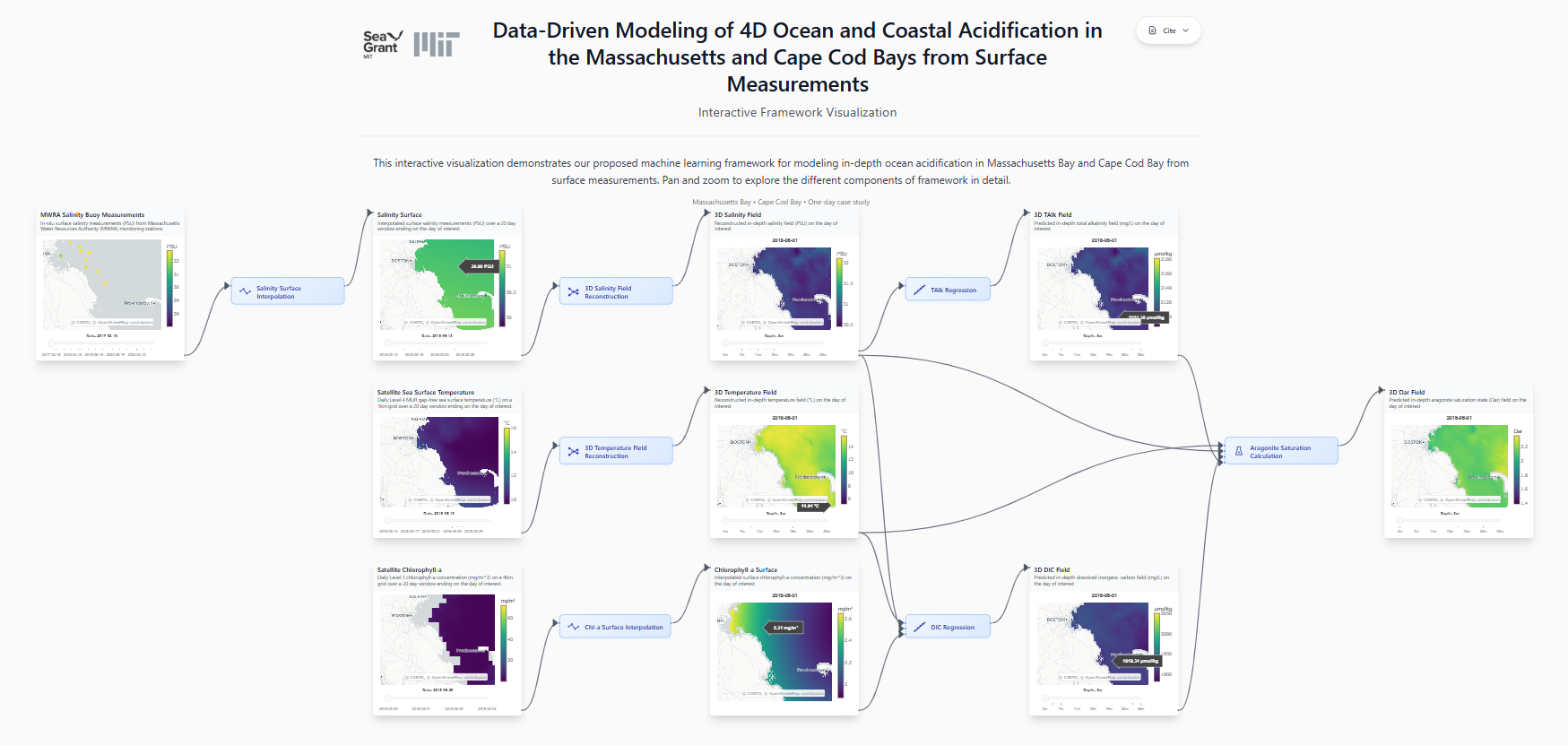Data-Driven Modeling of 4D Ocean and Coastal Acidification in the Massachusetts and Cape Cod Bays

The ocean absorbs about a quarter of carbon dioxide emissions in the atmosphere. When this carbon dioxide dissolves in seawater, it results in ocean acidification, affecting many ocean species like corals, lobsters, and oysters that make shells and skeletons by combining calcium and carbonate from seawater.
However, understanding the effects of ocean acidification is challenging due to the lack of available measurements and data, as well as the high cost and complexity of modeling. A team based at MIT created a new approach to modeling carbonate chemistry using machine learning and readily available surface measurements of temperature, salinity, and chlorophyll from satellites and low-cost sensors.
The team, including MIT Mechanical Engineering graduate student Bianca Champenois, MIT Sea Grant research scientist Carolina Bastidas, Northeastern University student Beck LaBash, and MIT Mechanical Engineering Professor Themis Sapsis, published a paper this June in the Journal of Geophysical Research: Biogeosciences. The paper, “Data-Driven Modeling of 4D Ocean and Coastal Acidification in the Massachusetts and Cape Cod Bays From Surface Measurements“, presents a data-driven approach to exploring and modeling ocean acidification.
An interactive visualization of the ocean acidification modeling framework developed in this study was also created by undergraduate researcher Beck LaBash.
The team also tested their framework in Massachusetts Bay and Stellwagen Bank—a region with fishing and tourism industries affected by ocean and coastal acidification—and explained that the model will be useful for monitoring, decision-making, and future planning. This work is part of an MIT Sea Grant-funded research project led by Professor Sapsis, “Quantification of Ocean Acidification and Flow Properties in the US North East Coast“.
>>Read the paper, “Data-Driven Modeling of 4D Ocean and Coastal Acidification in the Massachusetts and Cape Cod Bays From Surface Measurements“
>>View the Interactive Visualization of the ocean acidification modeling framework




